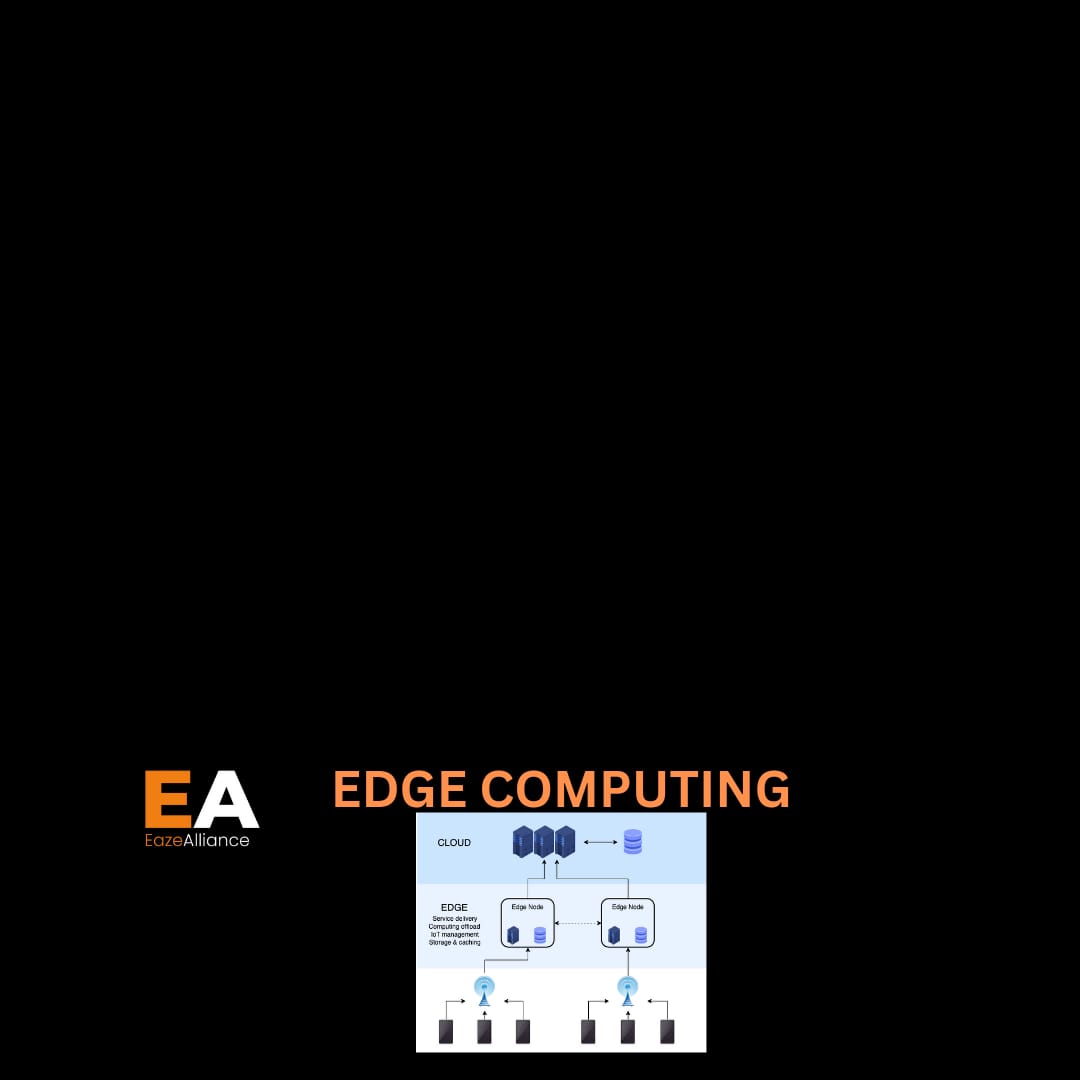Edge Computing: Enhancing Speed and Efficiency in Data Processing
 Eazealliance
Eazealliance 
In an era where digital transformation is accelerating, edge computing has emerged as a pivotal technology that enhances the speed and efficiency of data processing. This paradigm shift moves data processing closer to the source of data generation, fundamentally changing how we approach computing tasks.
What is Edge Computing?
Edge computing refers to the practice of processing data near the source of data generation rather than relying on a centralized data center. This approach is particularly valuable in scenarios where real-time data analysis is crucial, such as in IoT (Internet of Things) devices, autonomous vehicles, and smart cities.
Key Benefits of Edge Computing
Reduced Latency: By processing data locally, edge computing minimizes the delay associated with data traveling back and forth to a central server. This is essential for applications requiring immediate responses, such as self-driving cars and industrial automation systems.
Improved Bandwidth Efficiency: Sending all data to a centralized cloud or data center can overwhelm network bandwidth. Edge computing reduces the volume of data transmitted by processing and filtering data locally, leading to more efficient use of network resources.
Enhanced Privacy and Security: Edge computing can offer better data privacy and security. Since data is processed locally, sensitive information doesn't have to travel across the network, reducing the risk of interception or breaches during transmission.
Reliability and Resilience: Local data processing means that applications can continue to operate even if the central server is unavailable. This enhances the reliability and resilience of systems, particularly in remote or underserved areas.
Cost Efficiency: By processing data closer to its source, edge computing can reduce the need for extensive data transmission and storage in the cloud, potentially lowering operational costs.
Applications of Edge Computing
Smart Cities: In smart cities, edge computing supports real-time traffic management, surveillance, and public safety by processing data from sensors and cameras locally, enabling quicker decision-making and responses.
Healthcare: In the healthcare sector, edge computing enables real-time patient monitoring and analysis, improving response times for critical care and reducing the load on centralized systems.
Manufacturing: Edge computing enhances operational efficiency in manufacturing by enabling real-time monitoring and predictive maintenance of machinery, thereby minimizing downtime and optimizing production processes.
Retail: Retailers use edge computing for inventory management, personalized customer experiences, and real-time sales data analysis, helping them respond swiftly to customer needs and market trends.
Agriculture: In agriculture, edge computing assists in precision farming by analyzing data from sensors and drones to monitor crop health, soil conditions, and environmental factors, enabling more informed decisions and efficient resource use.
Challenges and Considerations
While edge computing offers numerous benefits, it also presents some challenges:
Infrastructure and Deployment: Implementing edge computing requires setting up infrastructure at various locations, which can be complex and costly. Managing and maintaining distributed devices can also pose logistical challenges.
Data Management: With data being processed across numerous edge devices, ensuring consistency and synchronization can be challenging. Effective data management strategies are crucial for maintaining data integrity.
Security Concerns: While edge computing can enhance security by reducing data transmission, it also introduces new security concerns. Ensuring that each edge device is secure from potential attacks is essential.
Scalability: Scaling edge computing solutions to accommodate growing data and device numbers requires careful planning. Solutions need to be adaptable to handle increasing loads without compromising performance.
Future of Edge Computing
The future of edge computing looks promising as advancements in technology continue to drive its evolution. Integration with AI and machine learning will further enhance the capabilities of edge devices, enabling even more sophisticated data processing and analytics. Additionally, the proliferation of 5G technology will bolster edge computing by providing faster and more reliable connectivity, expanding its applications and effectiveness.
In conclusion, edge computing is revolutionizing data processing by bringing computation closer to where data is generated. Its benefits in reducing latency, improving efficiency, and enhancing security are driving its adoption across various sectors. As technology continues to advance, edge computing will play an increasingly central role in shaping the future of digital infrastructure.
Subscribe to my newsletter
Read articles from Eazealliance directly inside your inbox. Subscribe to the newsletter, and don't miss out.
Written by

Eazealliance
Eazealliance
We accelerate your sales cycle while teaching you how easily you can create relationship where clients love to buy from you.